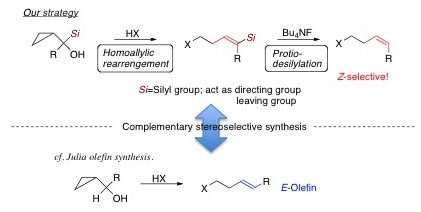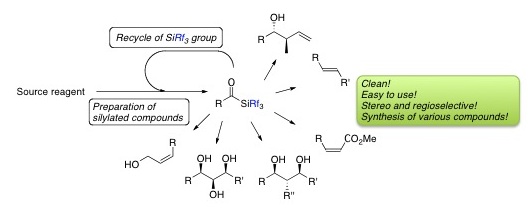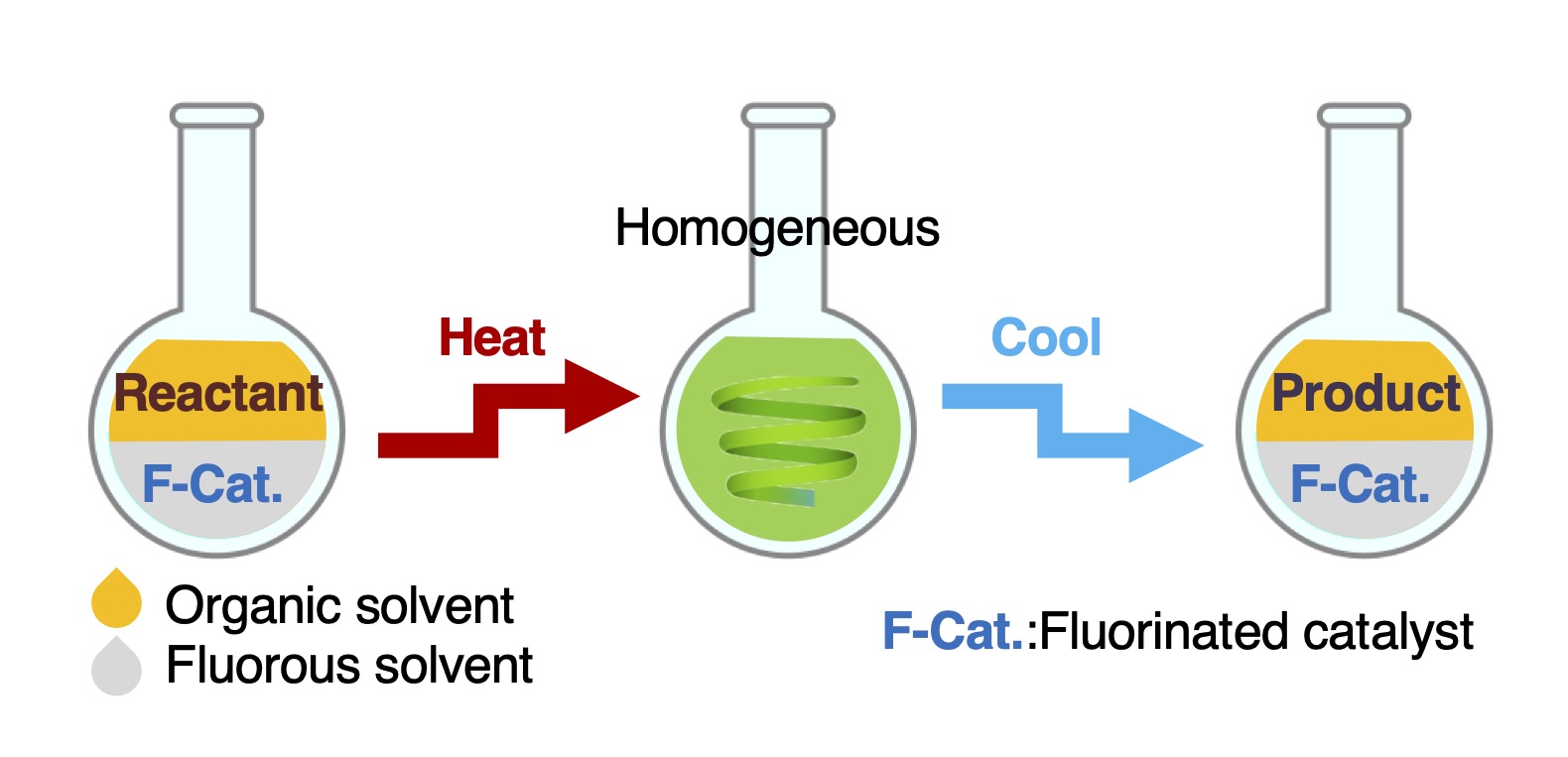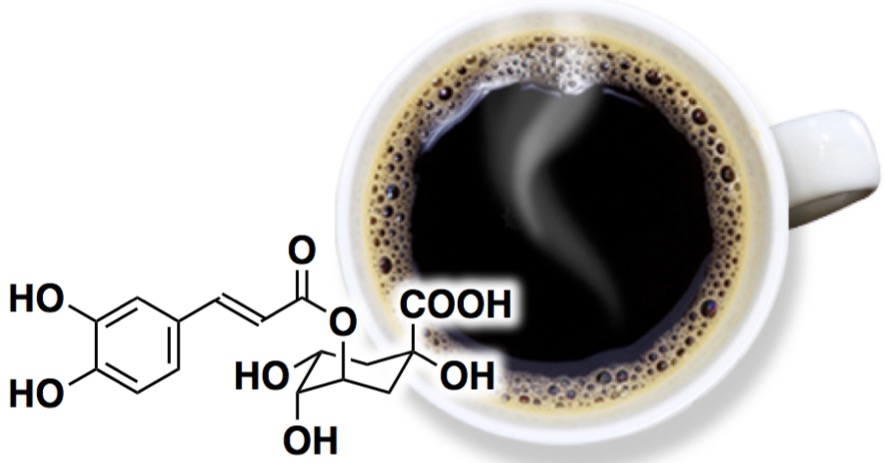Professor HONDA Mitsunori
Faculty, Affiliation
Faculty of Chemistry, Institute of Science and Engineering
College and School Educational Field
Division of Material Chemistry, Graduate School of Natural Science and Technology
Division of Material Chemistry, Graduate School of Natural Science and Technology
Course in Applied Chemistry, School of Chemistry, College of Science and Engineering
Laboratory
Molecular Design Chemistry
Academic Background
【Academic background(Doctoral/Master's Degree)】
Kanazawa University Master Graduate School, Division of Engineering Completed
【Academic background(Bachelor's Degree)】
Kanazawa University
【Degree】
Doctor
Career
Kanazawa University Faculty of Engineering
Kanazawa University
Kanazawa University
Kanazawa University
Year & Month of Birth
Academic Society
The Chemical Society of Japan
The Society of Synthetic Organic Chemistry, Japan
Japanese Society for Engineering Education
Award
Japanese Society for Engineering Education
○Fujisawa Pharmaceutical Co., Ltd. Award in Organic Chemistry, Japan(2002/12/16)
Specialities
Synthetic chemistry、Organic chemistry、Functional solid state chemistry
Speciality Keywords
Organic Synthesis, Organometallic Chemistry, Green Chemistry
Research Themes
The construction of organic compounds having contiguous stereogenic centers
 Stereoselective carbon-carbon bond formation is the most important problem. We have been investigated the construction of carbon chain having contiguous stereogenic centers using the reaction of acylsilanes. For example, the usual aldol reaction of acylsilanes proceeds to afford the corresponding 1,3-diol derivatives having three contiguous stereogenic centers via tandem Tishchenko reaction. On the other hand, the Mukaiyama aldol reaction of acylsilanes and the following nucleophilic addition also gave the diol derivatives with high stereoselectivity.
Stereoselective carbon-carbon bond formation is the most important problem. We have been investigated the construction of carbon chain having contiguous stereogenic centers using the reaction of acylsilanes. For example, the usual aldol reaction of acylsilanes proceeds to afford the corresponding 1,3-diol derivatives having three contiguous stereogenic centers via tandem Tishchenko reaction. On the other hand, the Mukaiyama aldol reaction of acylsilanes and the following nucleophilic addition also gave the diol derivatives with high stereoselectivity.
Stereoselective synthesis of organic compounds having alkene moiety
 Stereoselective olefin synthesis is the most important subject in synthetic organic chemistry. We have been investigated the stereoselective synthesis of homoallyl derivatives using the homoallylic rearrangement of cyclopropylcarbinyl cations having a silyl group on a carbinyl carbon. For example, cyclopropylsilylmethanols having a n-, s-butyl or phenyl group on the carbinyl carbon react to afford the E-homoallyl derivatives selectively. On the other hand, the reaction of cyclopropylsilylmethanols having a tert-butyl group gives Z-isomers exclusively. Furthermore, the following protiodesilylation of the resulting homoallyl derivatives proceeds with retention of configuration.
Stereoselective olefin synthesis is the most important subject in synthetic organic chemistry. We have been investigated the stereoselective synthesis of homoallyl derivatives using the homoallylic rearrangement of cyclopropylcarbinyl cations having a silyl group on a carbinyl carbon. For example, cyclopropylsilylmethanols having a n-, s-butyl or phenyl group on the carbinyl carbon react to afford the E-homoallyl derivatives selectively. On the other hand, the reaction of cyclopropylsilylmethanols having a tert-butyl group gives Z-isomers exclusively. Furthermore, the following protiodesilylation of the resulting homoallyl derivatives proceeds with retention of configuration.
Synthetic organic chemistry using fluorous compounds
 Fluorous chemistry is one of the most important discipline in green chemistry. We have been investigated that the utilization of silyl groups having perfluoroalkyl group on silicon atom as a fluorous tag in fluorous synthesis. For example, the synthesis of acylsilanes having fluorous groups on silicon atom were accomplished. The desired acylsilanes were easily separated from reaction mixture via liquid-liquid extraction between a common oraganic and a fluorous solvent in the synthesis. Further synthetic application of resulting acylsilanes was investigated now.
Fluorous chemistry is one of the most important discipline in green chemistry. We have been investigated that the utilization of silyl groups having perfluoroalkyl group on silicon atom as a fluorous tag in fluorous synthesis. For example, the synthesis of acylsilanes having fluorous groups on silicon atom were accomplished. The desired acylsilanes were easily separated from reaction mixture via liquid-liquid extraction between a common oraganic and a fluorous solvent in the synthesis. Further synthetic application of resulting acylsilanes was investigated now.
Development of newly functional ionic liquids
 Chemistry has a major role and responsibility to play in achieving the Sustainable Development Goals (SDGs) adopted at the United Nations Summit. Especially the field of Green and Sustainable Chemistry is defined as "Chemical sciences and technologies which are benign to both human health and the environment, and support the development of a sustainable society". Based on this concept, we are focusing on "ionic liquids" and "fluorous solvents," which have been called human health- and environment-friendly solvents. So we are working on the synthesis of new hybrid solvents that possess both of these properties.
Chemistry has a major role and responsibility to play in achieving the Sustainable Development Goals (SDGs) adopted at the United Nations Summit. Especially the field of Green and Sustainable Chemistry is defined as "Chemical sciences and technologies which are benign to both human health and the environment, and support the development of a sustainable society". Based on this concept, we are focusing on "ionic liquids" and "fluorous solvents," which have been called human health- and environment-friendly solvents. So we are working on the synthesis of new hybrid solvents that possess both of these properties.
Synthesis of polyphenols and investigation of its antioxidant behavior
 Some organic compounds act on specific physiological regulatory functions of living organisms even in very small amounts. However, the mechanism of action of many of them remains unclear. Therefore a stable supply of such substances is necessary to elucidate these mechanisms. As an example, chlorogenic acid contained in coffee is well known for its antioxidant effect. In our laboratory, chlorogenic acid and its analogues are our target compounds. We are studying mass production of them by chemical synthesis and elucidation of the reaction mechanism.
Some organic compounds act on specific physiological regulatory functions of living organisms even in very small amounts. However, the mechanism of action of many of them remains unclear. Therefore a stable supply of such substances is necessary to elucidate these mechanisms. As an example, chlorogenic acid contained in coffee is well known for its antioxidant effect. In our laboratory, chlorogenic acid and its analogues are our target compounds. We are studying mass production of them by chemical synthesis and elucidation of the reaction mechanism.
Books
Papers
- Synthesis of novel fluorous imidazolium ionic liquids Mitsunori Honda, Ryu Nakajima, Ko-Ki Kunimoto, and Masahito Segi Heterocycles 101 1 104-115 2020/01
- Synthesis of novel fluorous pyridinium ionic liquids Mitsunori Honda, Kohei Ashizawa, Ko-Ki Kunimoto, and Masahito Segi Heteroatom Chemistry 29 5-6 e21464, 1-11 2018/12
- Spectroscopic characterization of thiol adducts formed in the reaction of 4-methylcatechol with DPPH in the presence of N-acetylcysteine Masaki Ichitani, Hisako Okumura, Yugo Nakashima, Hitoshi Kinugasa, Mitsunori Honda, Ko-Ki Kunimoto European Journal of Chemistry 9 4 386-393 2018/12
- Synthesis of 1-hydrocarbon substituted cyclopropyl silyl ketones Mitsunori Honda, Sho Sasaki, Tsuyoshi Nishimoto, Hiromoto Koshiro, Ko-Ki Kunimoto, Masahito Segi TETRAHEDRON LETTERS 59 42 3777-3781 2018/10
- Aggregation behavior and thiol-thioester exchange for cationic surfactants with propylthioacetate side chain Tsuyoshi Asakawa, Nao Arai, Akina Fujii, Katsunori Takahashi, Kazuki Takakuwa, Mitsunori Honda, Akio Ohta, Hitoshi Asakawa Journal of Oleo Science 67 8 969-976 2018/08
- Palladium(II) acetate as catalyst in transvinylation reactions of hydroxycinnamic acid and its dervatives L. O. Kadidae, A. Usami, M. Honda Asian Journal of Chemistry 30 3 589-593 2018/03
- Synthesis and utility of 3-silylthiophenes having perfluoroalkyl groups M. Honda, Y. Taniguchi, T. Hayashi, K.-K. Kunimoto, M. Segi, T. Yamaguchi TETRAHEDRON LETTERS 58 48 4554-4558 2017/11
- Synthesis of fluorous pyrrolidinium and piperidinium ionic liquids M. Honda, T. Iwamoto, T. Ohnogi, K.-K. Kunimoto, M. Segi TETRAHEDRON LETTERS 58 32 3191-3193 2017/08
- Stereoselective synthesis of allyl ethers using α,β-unsaturated acylsilanes TETRAHEDRON LETTERS 58 864-869 2017/03
- Selective synthesis of caffeoylquinic acids (CQAs) using transesterification of vinyl caffeate L. O. Kadidae, A. Usami, T. Matsui, M. Honda, K.-K. Kunimoto International Journal of Applied Chemistry 12 3 193-207 2016/06
- New route for synthesis of 3- and 5-caffeoylquinic acids (CQAs) via protected quinic acids (QAs) L. O. Kadidae, A. Usami, T. Koyama, M. Honda, K.-K. Kunimoto European Journal of Chemistry 6 4 367-373 2015/12
- Crystal structure of 4‐ethyl-1,3-oxazolidine‐2‐thione H. Okumura, S. Kitoh, M. Suda, M. Honda, K.-K. Kunimoto European Chemical Bulletin 3 10 1017-1019 2014/10
- Crystal structures of racemic and enantiomeric 5‐isopropyl‐5‐methylhydantoin M. Ichitani, S. Kitoh, K. Tanaka, S. Fujinami, M. Suda, M. Honda, K.-K. Kunimoto European Journal of Chemistry 5 1 6-10 2014/03
- Stereoselective synthesis of 1,2,3-triol derivatives from α,β-unsaturated acylsilanes Honda, Mitsunori; Nakamura, Takayoshi; Sumigawa, Takumi; Kunimoto, Koki; Segi, Masahito Heteroatom Chemistry 25 6 565-577 2014/01/01

- Synthesis and crystal structure of (S)‐5‐isopropyl‐5‐methyl‐2‐thiohydantoin M. Ichitani, S. Kitoh, K. Tanaka, S. Fujinami, M. Suda, M. Honda, A. Kuwae, K. Hanai, K.-K. Kunimoto European Journal of Chemistry 4 4 350-352 2013/12
- 5-Isopropyl-5-methyl-2-sulfanylideneimidazolidin-4-one ACTA CRYSTALLOGRAPHICA SECTION E 69 o953 2013/05
- Persimmon tannin gel: Formation by autoxidation and caffeine adsorption properties L. O. Ahmad, L. H. M. Linh, M. Akimoto, Y. Kaneki, M. Honda, M. Suda, K. Kunimoto Food Science and Technology Research 19 4 697-703 2013/08
- 1-Acetyl-5-(4-fluorophenyl)-2-sulfanyl- ideneimidazolidin-4-one S. Kitoh, T. Feng, M. Ichitani, S. Fujinami, M. Honda, K. Kunimoto Acta Crystallographica Section E 69 01699 2013/05
- Crystal structure of 1-methyl-4-(4-diethylaminophenylazo)pyridinium iodide, C16H21N4+·I S. Kitoh, S. Fujinami, A. Iwase, A. Kuwae, K. Hanai, M. Suda, M. Honda, K. Kunimoto ZEITSCHRIFT FUR KRISTALLOGRAPHIE-NEW CRYSTAL STRUCTURES 228 33-34 2013/01
- An Efficient Synthesis of Cyclopropyl Silyl Ketones TETRAHEDRON 67 49 9500-9508 2011/12
- Reaction of Acylsilanes with α-Sulfinyl Carbanions: Regioselective Synthesis of Silyl Enol Ethers TETRAHEDRON LETTERS 52 3740-3742 2011/06
- Synthesis of Selenohydantoins from Isoselenocyanates and α-Amino Acids HETEROCYCLES 82 1709-1717 2011/03
- One-pot Synthesis of Selenoureas and Selenocarbamates via Selenation of Isocyanates with Bis(dimethylaluminum) Selenide TETRAHEDRON LETTERS 52 415-417 2011/01
- The Reaction of 1-Silylcyclopropyl Anions with Dichloromethyl Methyl Ether: The Efficient Synthesis of Cyclopropyl Silyl Ketones via Cyclopropylidene Derivatives TETRAHEDRON LETTERS 51 9 1294-1297 2010/03
- Reaction Behavior of Cyclopropylmethyl Cations Derived 1-Phenylselenocyclopropylmethanols with acids TETRAHEDRON 65 9403-9411 2009/10
- A New Polymorph of 2-Thiohydantoin X-ray Structure Analysis Online 25 91-92 2009/09
- A New Polymorph of 1-Acetyl-2-thiohydantoin X-ray Structure Analysis Online 25 92-93 2009/09
- Acid-catalyzed reaction behavior of 1-phenylselenocyclopropylcarbinols CHEMISTRY LETTERS 37 9 946-947 2008/09
- Stereoselective hetero Diels-Alder reaction of selenoaldehydes with pentavalent phosphole chalcogenides TETRAHEDRON LETTERS 48 19 3349-3354 2007/05
- An efficient 1,3-dipolar cycloaddition between aromatic selenoaldehydes and nitrile oxides or nitrile imines: an easy access to selenium-containing five-membered heterocyclic ring system TETRAHEDRON LETTERS 48 13 2303-2306 2007/03
- Acid-catalyzed reaction behavior of 1-silylcyclopropylcarbinols TETRAHEDRON LETTERS 47 32 5751-5754 2006/07
- An efficient synthesis of 5-silyl-2,3-dihydrofurans via acid-catalyzed ring-enlargement of cyclopropyl silyl ketones and their functionalization TETRAHEDRON LETTERS 46 7345-7348 2005/10
- Stereoselective construction of 1,3-diol derivatives via nucleophilic reaction to beta-methoxyacylsilanes CHEMISTRY LETTERS 34 1432-1433 2005/10
- Stereoselective acid-catalyzed homoallylic rearrangement of cyclopropylsilylmethanols: an efficient route to Z-homoallyl derivatives TETRAHEDRON LETTERS 46 6465-6468 2005/09
- Stereoselective Tandem Aldol-Tishchenko Reaction with Acylsilanes 34 466-467 2005/04
- Approach to the Problem-Based Learning in the Experiment in Organic Chemistry 53 1 100-104 2005/01
- Diastereoselective alkylation and reduction of TETRAHEDRON 59 41 8203-8212 2003/09
- Diastereoselective Aldol Condensation of Acylsilane Silyl Enol Ethers with Acetals TETRAHEDRON 58 34 6815-6823 2002/07
- Cationic Monomer-Isomerization Polymerization of Oxetanes Having an Ester Substituent, to Give Poly(orthoester) or Polyether MACROMOLECULAR CHEMISTRY AND PHYSICS 203 511-521 2002/02
- Ring-enlargement of Cyclopropylacylsilanes with Sulfuric or Triflic Acid. Selective Formation of Cyclobutanones or 2-Silyl-4,5-dihydrofurans. TETRAHEDRON LETTERS 36 1667-1670 1995/05
Conference Presentations
- Synthesis and Utility of 3-Silylthiophenes Having Perfluoroalkyl Groups(conference:14th International Kyoto Conference on New Aspects of Organic Chemistry (IKCOC-14))(2018/11)
- Novel Synthesis of 1-Substituted Cyclopropyl Silyl Ketones(conference:The 2015 International Chemical Congress of Pacific Basin Societies)(2015/12/15)
- Synthesis of Novel Ionic Liquids Possessing Perfluoroalkyl Groups(conference:13th International Kyoto Conference on New Aspects of Organic Chemistry (IKCOC-13))(2015/11/09)
- New Route for Synthesis of Caffeoylquinic Acids (CQAs) via Protected Quinic Acids (QAs)(conference:International Conference on Sciences, Engineering and Technology Innovations (2015 ICSETI))(2015/05/21)
- Kanazawa University STELLA Program: Development of Students Under 18 Toward Future Science and Technology Innovators (conference:The 85th JSAP Autumn Meeting 2024)(2024/09/16)
- Stereoselective Synthesis of Theogallin and Its Regioisomers(conference:The International Chemical Congress of Pacific Basin Societies 2021)(2021/12/16)
Others
Arts and Fieldwork
Patent
Theme to the desired joint research
○Development of novel organic synthesis
Grant-in-Aid for Scientific Research
○「グリーンサステイナブルケミストリーを指向した新規ハイブリッド界面活性剤の創製」(2024-2026)
○「グリーン・サスティナブルケミストリーを指向した実用的なフルオラスイオン液体の創製」(2021-2023)
○「パーフルオロアルキル基の特性を利用する新規ハイブリッド化合物の合成」(2018-2020)
○「フルオラスケミストリーを指向した新規イオン液体の創製」(2015-2017)
○「アシルシランシリルエノールエーテルのアルドール反応による連続不斉中心の選択的生成」(1993-)
○「環境調和型化学反応を目指したアシルシランの合成とその利用に関する研究」(2007-)
○「金属及びヘテロ元素の反応特性を複合的に活用した効率的分子変換反応の開発」(2002-)
○「炭素三員環とシリル基の特性を利用した立体選択的合成反応の開発」(2000-)
○「複数の元素の共同作用を利用する多官能性分子構築法の開発」(1999-)
○「遷移金属錯体による炭素結合形成を利用する効率的官能基変換反応の開発」(1998-)
○「有機ジルコニウム化合物およびセレン元素の特性を活用した効率的官能基導入法の開発」(1997-)
○「シクロプロピルアシルシランとその誘導体のキラル化合物への立体選択的変換」(1996-)
○「遷移金属触媒によるシクロプロピルシリルアルケン類の開環および環拡大反応」(1995-)
○「4族遷移金属錯体による炭素結合形成を利用する効率的分子変換反応の開発」(1997-)
○「シクロプロピルアシルシランの環拡大反応とその合成的利用」(1994-)
○「シクロプロピルアシルシランのハロゲン化ホモアリル誘導体への立体選択的変換」(1993-)
Competitive research funding,Contribution
Collaborative research,Consignment study
Classes (Bachelors)
○Introduction to Region-studies(2024)
○Research Work in Applied Chemistry(2024)
○Literature Survey in Chemistry(2024)
○Academic Skills(2024)
○Safety Engineering B(2024)
○Safety Engineering A(2024)
○Fundamental Laboratory Course in Applied Chemistry(2024)
○Fundamental Laboratory Course in Applied Chemistry(2024)
○Chemical Informatics(2024)
○Chemical Informatics(2024)
○Lecture on Life in Campus and Society(2024)
○Fundamental Chemistry 2B(2023)
○Fundamental Chemistry 2A(2023)
○Introduction to Region-studies(2023)
○Fundamental Laboratory Course in Applied Chemistry(2023)
○Chemical Informatics(2023)
○Chemical Informatics(2023)
○Presentation and Debate(2023)
○Academic Skills(2023)
○General Materials Chemistry B(2023)
○General Materials Chemistry A(2023)
○Lecture on Life in Campus and Society(2023)
○Research Work in Applied Chemistry(2023)
○Literature Survey in Chemistry(2023)
○Safety Engineering B(2023)
○Safety Engineering A(2023)
○Fundamental Laboratory Course in Applied Chemistry(2023)
○Introduction to Region-studies(2022)
○Research Work in Applied Chemistry(2022)
○Literature Survey in Chemistry(2022)
○Safety Engineering(2022)
○Problem-Based Learning A(2022)
○Fundamental Laboratory Course in Applied Chemistry(2022)
○Experiments in Fundamental Chemistry(2022)
○Experiments in Fundamental Chemistry(2022)
○Experiments in Fundamental Chemistry(2022)
○Chemical Informatics(2022)
○Presentation and Debate(2022)
○Academic Skills(2022)
○Freshman Seminar I(2022)
○Fundamental Chemistry 2B(2021)
○Fundamental Chemistry 2A(2021)
○Introduction to Region-studies(2021)
○Presentation and Debate (Freshman Seminar II)(2021)
○Academic Skill(2021)
○Experiments in Fundamental Chemistry(2021)
○Experiments in Fundamental Chemistry(2021)
○Fundamental Chemistry 2(2021)
○Introduction to Engineering(2021)
○Research Work in Applied Chemistry(2021)
○Safety Engineering(2021)
○Chemical Informatics(2021)
○Literature Survey in Chemistry(2021)
○GS English Language for Undergraduates II (English for Science and Engineering)(2021)
○GS English Language for Undergraduates I (English for Science and Engineering)(2021)
○Problem-Based Learning I(2021)
○Fundamental Laboratory Course in Applied Chemistry(2021)
Classes (Graduate Schools)
○Research Work(2024)
○Technical English for Applied Chemistry(2024)
○Organic Reaction Mechanism(2024)
○Laboratory Rotation I(2024)
○Bio-Organic Chemistry(2024)
○Introduction of Material Program(2024)
○Asymmetric Organic Reactions(2024)
○Research Work(2023)
○Technical English for Applied Chemistry(2023)
○Bio-Organic Chemistry(2023)
○Introduction of Material Program(2023)
○Asymmetric Organic Reactions(2023)
○Laboratory Rotation I(2023)
○Organic Reaction Mechanism(2023)
○Research Work(2022)
○Bio-Organic Chemistry(2022)
○Asymmetric Organic Reactions(2022)
○Organic Reaction Mechanism(2022)
○Introduction of Material Program(2022)
○Introduction of Material Program(2022)
○Technical English for Applied Chemistry(2022)
○Technical English for Applied Chemistry(2021)
○Applied Material Chemistry B(2021)
○Applied Material Chemistry A(2021)
○Research Ethics(2021)
○Fostering the independence of researchers(2021)
○Asymmetric Organic Reactions(2021)
○Bio-Organic Chemistry(2021)
○Introduction of Material Program(2021)
○Presentation IV(2021)
○Presentation III(2021)
○Presentation II(2021)
○Presentation I(2021)
○Advanced Chemistry(2021)
○Research Work(2021)



